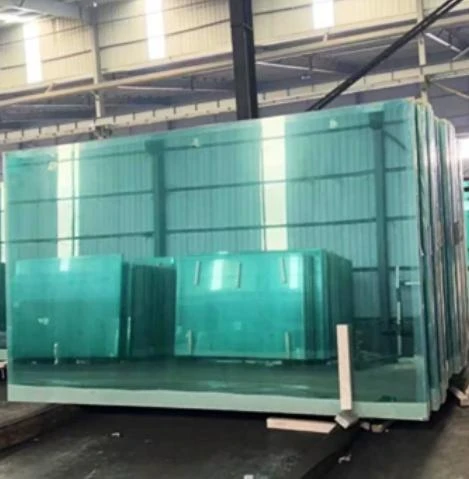The Rise of Tinted Float Glass A Modern Solution for Energy Efficiency and Aesthetics
In the contemporary world of architecture and design, glass has transcended its traditional roles to become a vital component in creating visually stunning and energy-efficient structures. Among the various types of glass available, tinted float glass has emerged as a popular choice for both commercial and residential applications. This article explores the benefits, applications, and advancements in tinted float glass, shedding light on why it is becoming an indispensable material in modern construction.
Tinted float glass is produced by adding various metal oxides during the manufacturing process, which imparts color to the glass while maintaining its clarity. This unique production method allows for a wide range of colors and shades, providing architects and designers with versatile options to enhance the aesthetic appeal of their projects. The color variations not only contribute to the visual aspect but also play a significant role in controlling light transmission. By reducing glare and preventing excessive sunlight, tinted float glass creates a more comfortable environment in both indoor and outdoor settings.
One of the standout features of tinted float glass is its energy efficiency. By filtering out harmful ultraviolet (UV) rays and limiting solar heat gain, this type of glass helps reduce dependence on artificial heating and cooling systems. This, in turn, can lead to significant energy savings for homeowners and businesses alike. In a time when sustainability is at the forefront of architectural design, the use of tinted float glass aligns perfectly with the goals of reducing carbon footprints and promoting eco-friendly construction practices.
tinted float glass
In addition to energy efficiency, tinted float glass provides enhanced privacy without sacrificing natural light. This makes it an optimal choice for spaces such as offices, conference rooms, and residential bathrooms, where occupants may prefer a level of seclusion while maintaining an open and inviting atmosphere. The diverse range of tinting options allows for a tailored approach, catering to specific needs and preferences.
Furthermore, advancements in glass technology have led to the development of high-performance tinted float glass that combines aesthetic appeal with superior functionality. New coatings and treatments improve durability and resistance to scratches, ensuring that tinted glass maintains its beautiful appearance over time. Additionally, innovations such as self-cleaning coatings enhance convenience for building owners, making it easier to maintain the glass's clarity and shine.
In conclusion, tinted float glass represents a harmonious blend of style, energy efficiency, and practicality. As architects and designers continue to push the boundaries of creativity, this versatile material will undoubtedly remain a favored choice in the realm of modern construction. Embracing tinted float glass not only elevates the visual character of a space but also contributes to a sustainable future, making it an essential component in today’s architectural landscape.
 Afrikaans
Afrikaans  Albanian
Albanian  Amharic
Amharic  Arabic
Arabic  Armenian
Armenian  Azerbaijani
Azerbaijani  Basque
Basque  Belarusian
Belarusian  Bengali
Bengali  Bosnian
Bosnian  Bulgarian
Bulgarian  Catalan
Catalan  Cebuano
Cebuano  Corsican
Corsican  Croatian
Croatian  Czech
Czech  Danish
Danish  Dutch
Dutch  English
English  Esperanto
Esperanto  Estonian
Estonian  Finnish
Finnish  French
French  Frisian
Frisian  Galician
Galician  Georgian
Georgian  German
German  Greek
Greek  Gujarati
Gujarati  Haitian Creole
Haitian Creole  hausa
hausa  hawaiian
hawaiian  Hebrew
Hebrew  Hindi
Hindi  Miao
Miao  Hungarian
Hungarian  Icelandic
Icelandic  igbo
igbo  Indonesian
Indonesian  irish
irish  Italian
Italian  Japanese
Japanese  Javanese
Javanese  Kannada
Kannada  kazakh
kazakh  Khmer
Khmer  Rwandese
Rwandese  Korean
Korean  Kurdish
Kurdish  Kyrgyz
Kyrgyz  Lao
Lao  Latin
Latin  Latvian
Latvian  Lithuanian
Lithuanian  Luxembourgish
Luxembourgish  Macedonian
Macedonian  Malgashi
Malgashi  Malay
Malay  Malayalam
Malayalam  Maltese
Maltese  Maori
Maori  Marathi
Marathi  Mongolian
Mongolian  Myanmar
Myanmar  Nepali
Nepali  Norwegian
Norwegian  Norwegian
Norwegian  Occitan
Occitan  Pashto
Pashto  Persian
Persian  Polish
Polish  Portuguese
Portuguese  Punjabi
Punjabi  Romanian
Romanian  Russian
Russian  Samoan
Samoan  Scottish Gaelic
Scottish Gaelic  Serbian
Serbian  Sesotho
Sesotho  Shona
Shona  Sindhi
Sindhi  Sinhala
Sinhala  Slovak
Slovak  Slovenian
Slovenian  Somali
Somali  Spanish
Spanish  Sundanese
Sundanese  Swahili
Swahili  Swedish
Swedish  Tagalog
Tagalog  Tajik
Tajik  Tamil
Tamil  Tatar
Tatar  Telugu
Telugu  Thai
Thai  Turkish
Turkish  Turkmen
Turkmen  Ukrainian
Ukrainian  Urdu
Urdu  Uighur
Uighur  Uzbek
Uzbek  Vietnamese
Vietnamese  Welsh
Welsh  Bantu
Bantu  Yiddish
Yiddish  Yoruba
Yoruba  Zulu
Zulu 

